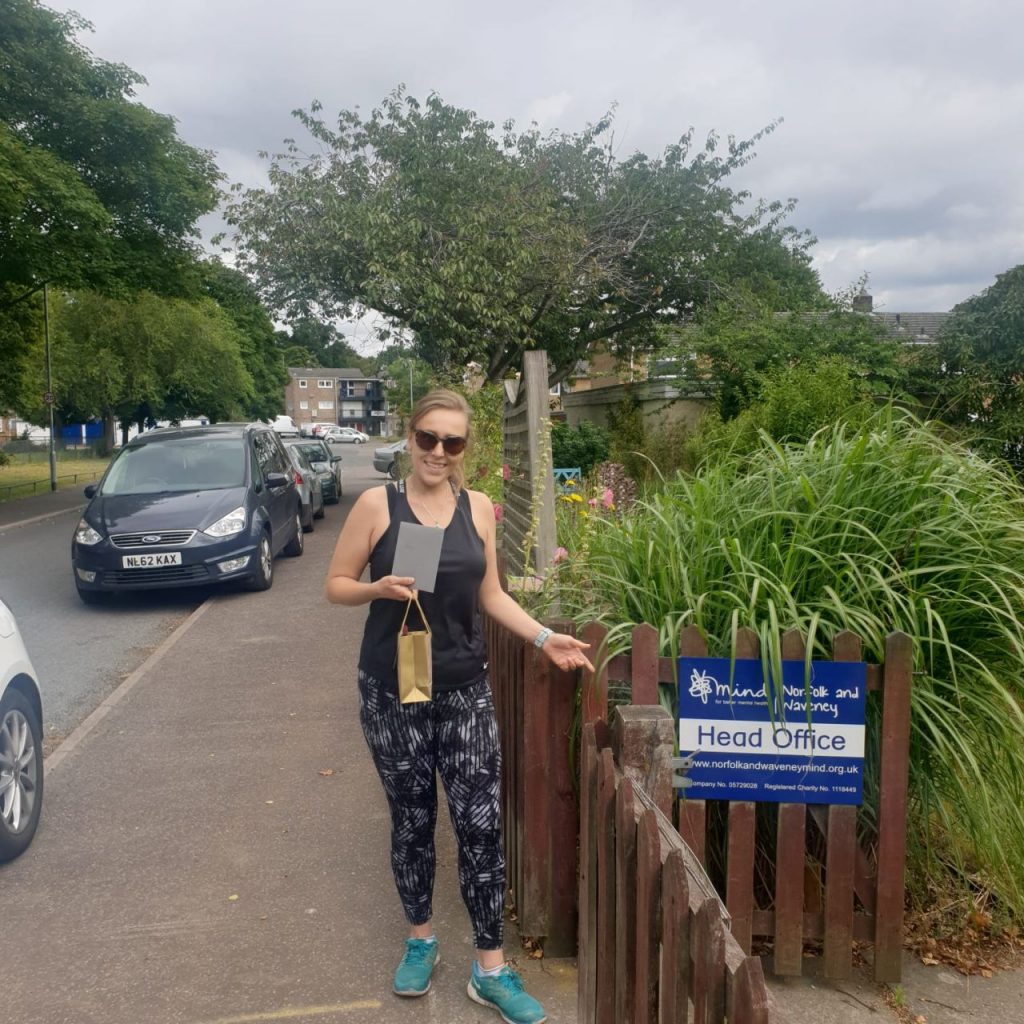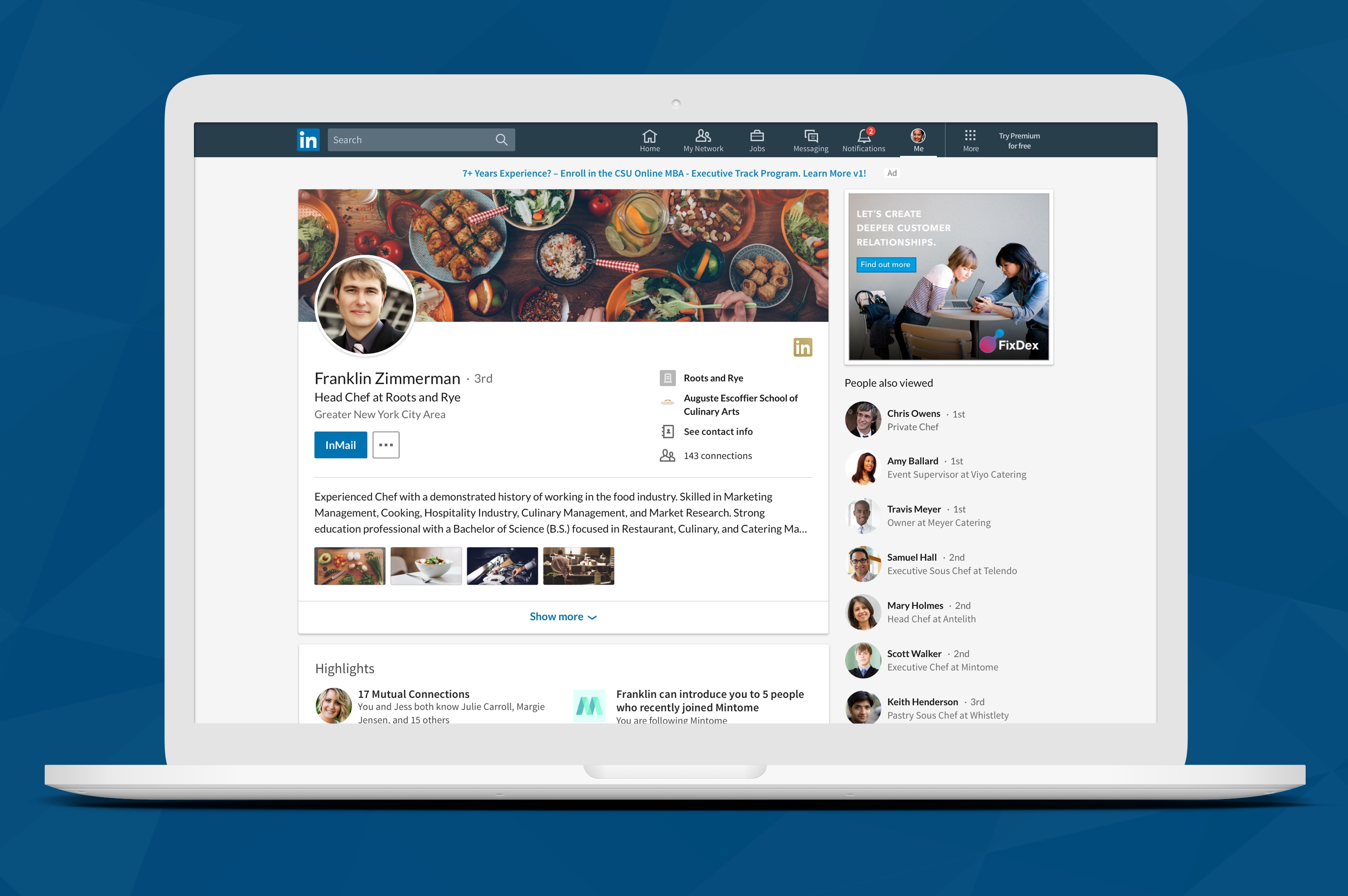Hales Group Team Complete 100km in July Challenge to raise funds for charity
The team at Hales Group has smashed their £100 target and have so far raised £417 for Mind and the Dogs Trust – the two nominated charities voted for by employees of the Hales Group.


Managing your wellbeing in a time of crisis
Many people are experiencing extra worry and stress at this current time. The added pressures of working from home in isolation from colleagues and peers, is likely to have a long-lasting effect on their mental health and wellbeing.

Life After Lockdown: The Rise of Home Working
The COVID-19 pandemic has posed many severe challenges to the economy. In fact, back in June the BBC reported that according to the Office for National Statistics 600,000 people in the UK were made redundant, as the economy contracted significantly.



10 Tips to improve your LinkedIn Profile

We all still think of our CV as the best tool for selling ourselves when we’re job hunting, but prospective employers will quite probably look at your LinkedIn profile too. You want your profile to grab the eyes of the recruiter and keep their attention. Here are some handy tips to help you create a strong online presence in order to get noticed in today’s job market.
1. Make a Powerful First Impression
Your photograph and headline are the two most prominent details on your profile that encourage someone to click to discover more about you, or not. Make sure you use an appropriate photo – ideally, a headshot of you looking smartly presented and professional. Don’t use a photo taken at a party or on holiday, or a posed selfie. Your headline should stand out to set you apart from the profiles of your peers. Don’t make it too long – it needs to grab the recruiter’s attention in the first few words; also some screen views cut the headline down to three or four words, so don’t waste the start of yours using phrases like, ‘I am currently focusing on…’ Another great way to stand out and set your profile apart from that of your peers is to upload a background photo as currently only a small percentage of users have them! Think about what message the image will give about you or your business – you want it to reflect whatever it is that you are trying to promote on LinkedIn, such as the brand logo for your company, a photo that shares your or your company’s key achievements or showcasing your work if you’re a designer, photographer, writer or in a creative industry.
2. Avoid cliché words
Using words like ‘passionate, hardworking and focused’ doesn’t differentiate you from your peers and may alienate you from the recruiter. It is better to be specific. Talk the reader through your particular achievements, qualifications and experienced using your normal vocabulary and writing style and use facts and figures where you can. Make sure your profile paints you as an approachable person who is going to fit well into the company culture.
3. Boost Your Profile’s Visibility
Knowing where to strategically place keywords will help to get your profile in front of more recruiters. Think about which words people in your field are likely to search for and include those words in your headline and summary sections. Also, make sure you have something written in the ‘Current Position’ field; recruiters often search by current position to find candidates.
If your current job title doesn’t include the keywords for the role you are looking for, then it’s a good idea to try and include them. For example, if your job is ‘Creative Designer’ but you are looking for a marketing role, you could add ‘ – Marketing’ after your job title to ensure you appear in marketing-related searches.
4. Get Creative
If you produced a video for your degree or have photos from voluntary work you have undertaken, put them on your LinkedIn profile. These are things you can’t put onto a CV and it’s good to give a prospective recruiter an insight into your personality as well as your work self.
5. Be Specific
Include relevant quantifiable achievements in your summary. For instance, instead of saying “I am a successful HR assistant”, write “I increased productivity by 25% in 2019 by implementing a new staff training initiative.”
6. Be Proactive
Once your LinkedIn profile is updated and improved, join relevant groups and interact with other LinkedIn users – like, comment on and share others’ posts and industry-related articles; update your status regularly with professional comments and if you feel confident to do so, develop this further by writing lengthier posts.
7. Keep It Updated
Set a regular reminder to check your profile and update it with your latest achievements and endorsements. Ask someone you’ve worked closely with for a recommendation – they become the best references you could ask for.
8. Get to Know How LinkedIn Works
There are lots of privacy options in the ‘Settings and Privacy’ section that you should familiarise yourself with, such as how your profile will be viewed by those who aren’t connections and whether or not you want your entire network to be alerted when you make small changes to your profile. Take a look at other people’s profiles and get to know what works and what doesn’t from the perspective of a viewer and if certain things about their profile engaged you or they had a headline that caught your eye, then adapt elements of what they’ve done for your own profile.
9. Make Sure You Can Be Found
It’s a great idea to get a custom URL so that you can be found easily. You can opt to use just your name if it’s available (www.linkedin.com/joebloggs), or your name with a hyphen or another combination. Click on ‘Edit your public profile’ under ‘Settings and Privacy’ and you should see an option to ‘Edit URL’.
Make sure the contact details you have listed are current and also include other social media information such as your Twitter handle.
10. Keep things concise.
While it’s important to include details of past jobs and list your achievements in the roles, don’t be tempted to include too much information. Three or four bullet points under each job listing are enough to inform but not overwhelm.
Hales Group Announces Launch of BrandNew App
One of the UK’s leading staffing firms, Hales Group, is delighted to announce the release of their new app, now available to download on the App Store and Google Play.
The Hales Jobs app is designed to improve job search and candidate experience, with the following features available to all Hales Jobs applicants:
- Candidates can apply instantly for roles.
- Candidates without CV’s can build one using the intuitive CV Builder.
- Hales workers can submit and receive authorised timesheets directly through the app, rather than printing and submitting manually.
- Hales temp workers can book shifts, and clock in and out electronically.
Hales Group Employment Services Managing Director Kirsty Walpole spoke at the launch: “We are thrilled to finally be able to go live with our app to continue our commitment to offering the very best experience to our candidates and clients. If you would like a full demonstration of how our App can help benefit candidates and clients please contact your local branch for more information.”
Interview tips to help you land the job you want
The coronavirus pandemic has halted hiring for a lot of companies, but those that are recruiting are rethinking their selection methods, with many conducting video and telephone interviews rather than meeting applicants in person. While a video or telephone interview offers an effective way for both the candidate and the recruiter to assess the candidate’s interest in the job, it can be an unnerving experience. In a telephone interview, it can be hard to read a situation when you can’t see the other person’s reactions. With that in mind, here are some tips to help you sail through your next phone interview and bag your place on the job offer shortlist!

Use a landline if you can

You want the phone interview to be go as smoothly as possible. Taking a phone interview on a mobile phone is a bad idea for several reasons – you don’t want to risk the interviewer not being able to hear you clearly if you have intermittent signal, or the call ending abruptly if you lose signal completely. Using a mobile phone could also tempt you to move around, which changes your breathing pattern and can distort your voice – this may be noticeable and off-putting to the interviewer.
Maintain Good Posture
While the interviewer can’t see you on a telephone interview, it’s advisable to still maintain good posture while speaking to him or her. This is akin to the idea that if you smile, the other person will hear it in your voice. Good posture encourages you to sit up straight, feel confident and maintain steady breathing and a clear voice. It’s also worthwhile getting dressed as you would for a face to face interview – this will help you get in the right mind-set and feel self-assured.
Rehearse Your Answers

Whilst it’s not possible to predict every question the interviewer will ask you, part of the research you should do before taking the call (in addition to finding out all you can about the company and the position you are interviewing for) is what questions the interview could ask. You can then consider what responses you might give. For example, you should already have a situation in mind that you can speak about with confidence when questioned on the biggest challenge you have overcome in your career to date, or something you are particularly proud of having accomplished in your personal life.
Pause Before You Answer
A period of silence can seem to last longer on a phone call, which may lead to you answering straight away when asked a question. Don’t be afraid to say to the interviewer “That’s a really good question. Let me think about that for a moment.” It will demonstrate to the interviewer that you’re confident and you don’t rush into a situation without giving it due consideration first.
Prepare Notes

Even if you have rehearsed your answers and feel confident you have done sufficient research, your mind may unexpectedly go blank suddenly during the interview. It’s a good idea to have a prompt sheet, with bullet points that you may need to refer to during the call, such as the questions you have about the company and the position, the salary range you’re considering or what benefits you want to enquire about.
Be Upbeat

It can be difficult to portray excitement or energy as the interviewer can’t see your face so be sure to pay extra attention to your voice and ensure you sound enthusiastic and cheery.
The EU Settlement Scheme is open
If you are an EU citizen and want to continue living in the UK after 30 June 2021, you and your family members will need to apply to the EU Settlement Scheme.
Recruiters: Don’t Be Caught out by GDPR – Protect Yourself with Our 5-Point Checklist
On 25th May 2018, businesses in all sectors will have to abide by the General Data Protection Regulation. Fail to do so, and you could face a fine of up to 2% of your global annual turnover; or €20 million – whichever is higher.
Non-compliance is simply not worth the risk.
GDPR: What Is It?
GDPR is a new regulatory framework that gives individuals more control over how organisations collect and process their personal data. It provides a uniform template for EU businesses to follow requiring the full consent of individuals for the data they share.
The Effect on Your Data
Recruiters review and collate a raft of data to profile candidates. From May 2018, candidates will have the right to object to any personal data being processed by recruiters, as well as the right to be forgotten—meaning recruiters will have to delete the personal history of candidates who exercise this right.
Auditing Your Data
A full data audit is the critical first step in GDPR compliance, for which most organisations have appointed a Data Protection Officer. This is the single point of contact to identify ‘at-risk’ areas in your business while creating a company-wide plan of action to become GDPR-compliant.
Not only must you review the data you currently store, but you must also audit how you collect the information. Explicit consent is the underlying driver of GDPR, so you must have an actual ‘yes’ from the candidate for any data you hold, as well as any data you plan to collect or process in the future.
Data Sharing
GDPR requires not only best-practice data collection but also accurate records of how you store data, as well as who you share it with. If you share candidate or reference information with a client, for example, you will need signed consent from the individual before sending personal details to the prospective employer.
Moreover, if you’ve previously shared inaccurate information with a client or third-party, you also have the responsibility to alert them to that fact.
The GDPR 5-Point Plan
1. Review your current data collection methods, the data you have on file, as well as your data-sharing practices. Identify where you must have explicit consent to hold or share data.
2. Centralise your data management policies so both your recruiters and GDPR auditors can clearly understand how your business adheres to GDPR requirements; transparency is key to compliance.
3. Update your data terms of use, so candidates have full transparency over why you collect certain information and how you will use it.
4. Establish a forward-looking data management plan to ensure ongoing compliance. Your Data Protection Officer should take responsibility for all future checks and balances.
5. Coordinate security checks and have policies in place should a data breach occur. Under GDPR, if data is compromised, you have a responsibility to alert the ICO. Plan ahead, so that you can uncover and rectify any breach in the shortest possible timeframe.
GDPR is about proving you have taken all the necessary steps to protect the public’s privacy. Map out your processes, keep detailed records of data collection methods, and be sure you can prove your due diligence should an auditor come knocking.
UK Employees Say Poor Management Is Making Them Unhappy at Work
At Hales Group we recently conducted a survey to gain a greater understanding of what is making employees unhappy at work. Conducting the UK wide survey, we wanted to find out what the unhappiest sector is, which region has the highest number of unhappy employees, the areas that staff wish they could change at work and their biggest dislike about where they work.
Poor management was found to be making employees most unhappy at work as 48% said that this was the cause of their workplace sadness, followed by 20% who said that they were not paid enough. 13% felt that their company has no career progression, and with company culture something which many organisations are placing a large emphasis on, 13% said that this was not up to scratch and was making them unhappy.
Overall employee satisfaction was below average in the survey, with 23% less than satisfied with going to work each day.
The South East is the unhappiest region in the UK, with the largest number of respondents coming from this area, followed by the East Midlands – showing that businesses in this area are not up to employee standards, and leaving room for work to be done by managers and organisations in this region.
As for the unhappiest sector, those who work in education said that they were the most unhappy, with employees in accountancy, banking and finance coming closely behind. Social care and tech were found to be two of the most satisfactory sectors to work in.
Management is the thing that 41% of employees would like to change about their job the most, with 27% saying that the company culture requires improvement if it is to improve their happiness at work.
With management coming top overall for making employees unhappy and being the area that staff would like to change, management teams within organisations need to look at the ways that it can provide better support to employees in order to improve their workplace wellbeing and professional development.
The survey highlights that company culture is not pleasing employees, as it is evident that pay alone is not the key to increasing job satisfaction. Monetary gain is no longer essential to keeping employees happy, with a greater emphasis on a workplace which has a culture which is inclusive and accommodating to all employees and allows them a work/life balance to suit their needs and lifestyle.
Kirsty Walpole, Director of Sales and Operations at Hales Group, comments, “It is interesting to see that poor management now outweighs low salary as the thing people most dislike, however, this would mirror what candidates tell us when they register. The biggest reason for leaving a role is that workers do not feel appreciated. Your culture and surroundings play a big part in how you feel at work, and you are with your colleagues for up to 8 hours a day, so this is understandable. This is something all employers should focus on to increase retention and productivity.”
Company Culture – How to Know If You’ll Really Like It
The role may be your dream job, but if the culture isn’t right, you’ll be job hunting sooner than you may have expected.
‘Culture fit’ may have become a hiring buzzword of late, but it’s as much a concern for the employer, as it is for an employee. After all, we often spend more time at work than with our loved ones, so it’s more important than ever that the 9 to 5 or whatever hours you work are enjoyable.
Plus, a working environment and culture that is mutually beneficial for employee and employer are likely to improve staff happiness and productivity, improving retention rates and the bottom line.
But when both parties are on their best behaviour in the interview process, it can be hard to assess just what the culture of a company is like.
Here’s how to find out if the company culture is for you.
- Research
Just like most things, if you want to learn more about something then you need to do your research.
Now, trying to learn more about a company’s culture isn’t going to be easy, as unless you’re inside the four office walls, but you can still glean some insights into the inner workings of the business with a little research.
Social media is one of the best tools to use to get an insight into company culture and find out more about the employee experience.
An employer is likely to check out your social profiles, and you should be doing the same to them. Is their Twitter feed full of promotional tweets? Or are there mentions of events they are attending and speaking at? Can you see any photos of company BBQs or social events?
Do staff have their own professional profiles? – If so, take a moment to look at their profiles too. Staff profiles are likely to give good insight into working life at the company, and if you are feeling brave, you could even seek out past employees on LinkedIn and ask them a few questions about the culture too.
Re-read the job description too, as this is likely to have given some information regarding the company culture. Do the benefits of the jobs mention a standard holiday package and pension plan, or are their perks detailed such as flexible working, company lunches, unlimited holiday, a relaxed office environment?
On the website are their detailed meet the team pages or just an about us page instead? A meet the team page indicates the value that employers have invested in their employees and sharing their backgrounds and successes, while a generic about us page indicates that the company is faceless. Do they have a blog? Is this regularly updated with industry content? If so, you can tell that the business is invested in developing its employees and them sharing their knowledge.

- Scope out the office
If you’ve arrived for your interview early and are waiting in a reception area or meeting room, don’t just sit there nervously looking at your lap – make the most of that time to check out the office environment.
Is it quiet and uncomfortable? Or are employees chatting comfortably in a relaxed, friendly and open atmosphere? Is the office open plan? Or if there are separate offices are doors and blinds open, or are they closed off from the rest of the office? If there is a receptionist, have they been friendly on your arrival? Do staff seem helpful to one another?
When it comes to décor, is it drab and uninspiring with a long bank of desks? Or are their breakout areas where employees can work in different places around the office? Can you see any evidence of lunchtime or downtime activities such as books to read or games to play?
When you go to interview, it’s important to remember that it’s as much about an employer assessing your suitability for the role, as you are evaluating whether this is the role – and culture – for you.

- Ask questions
If you don’t ask, you don’t get. And while you may need to toe the line during the interview and ask questions in a well-thought manner, you can still ask questions about the company culture, without it coming across that you’re only in it for fun.
The following questions should help to give you an insight:
When have you felt most proud to work at the company?
What does the office look like day to day?
What was the last project the team worked on as a whole?
What’s the best part of working here?
Ideally, you want to find out more about the working environment of the company and whether there is a culture that has a supportive team effort, where employees enjoy coming to work. You also want to gain an understanding of whether your interviewers enjoy working at the company – of course, they are likely to say yes, but if there is a hint of hesitation then it may be worth keeping this in mind.
- Is it the culture for you?
After all of this research, it’s time to evaluate if the culture is right for you.
What kind of working environment do you work at best? Do you enjoy a quiet pace? Or do you thrive in a fast-paced, busy office? Do you want an assigned desk space? Or are you more comfortable being able to pick and choose which area in the office you work from?
Do you like to be suited and booted? Or is a relaxed dress code more your style?
How do you like to be motivated? Have you seen any evidence that your professional needs will be met at the company, and that you’ll be encouraged and put on a development path?
Does the company fit in with your lifestyle? Do the working hours mean that you can have a good work/life balance? Is there a canteen where you can have lunch? Or a separate lunch space you can eat something homemade rather than at your desk? Are there healthy snacks on offer? Regular company lunches? Does the office have regular days out or activities?
Assessing the company culture is essential in your job search, as culture fit is likely to be just as important to an employer as is your suitability to do the role you have applied for. Equally, you need to be sure about how you’ll fit in at the company and if it’s an environment that you can see yourself enjoying, thriving in and progressing in.







